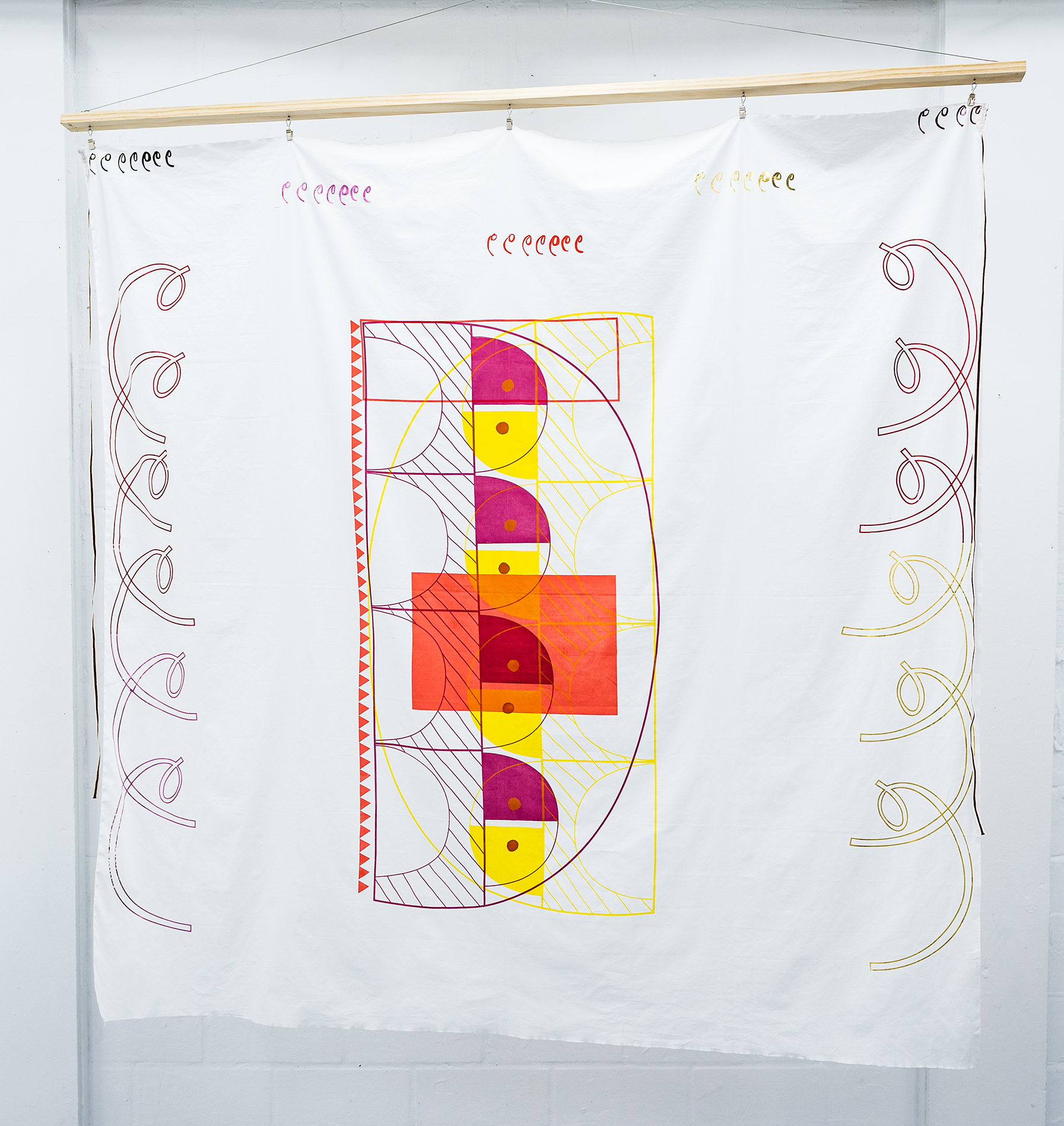
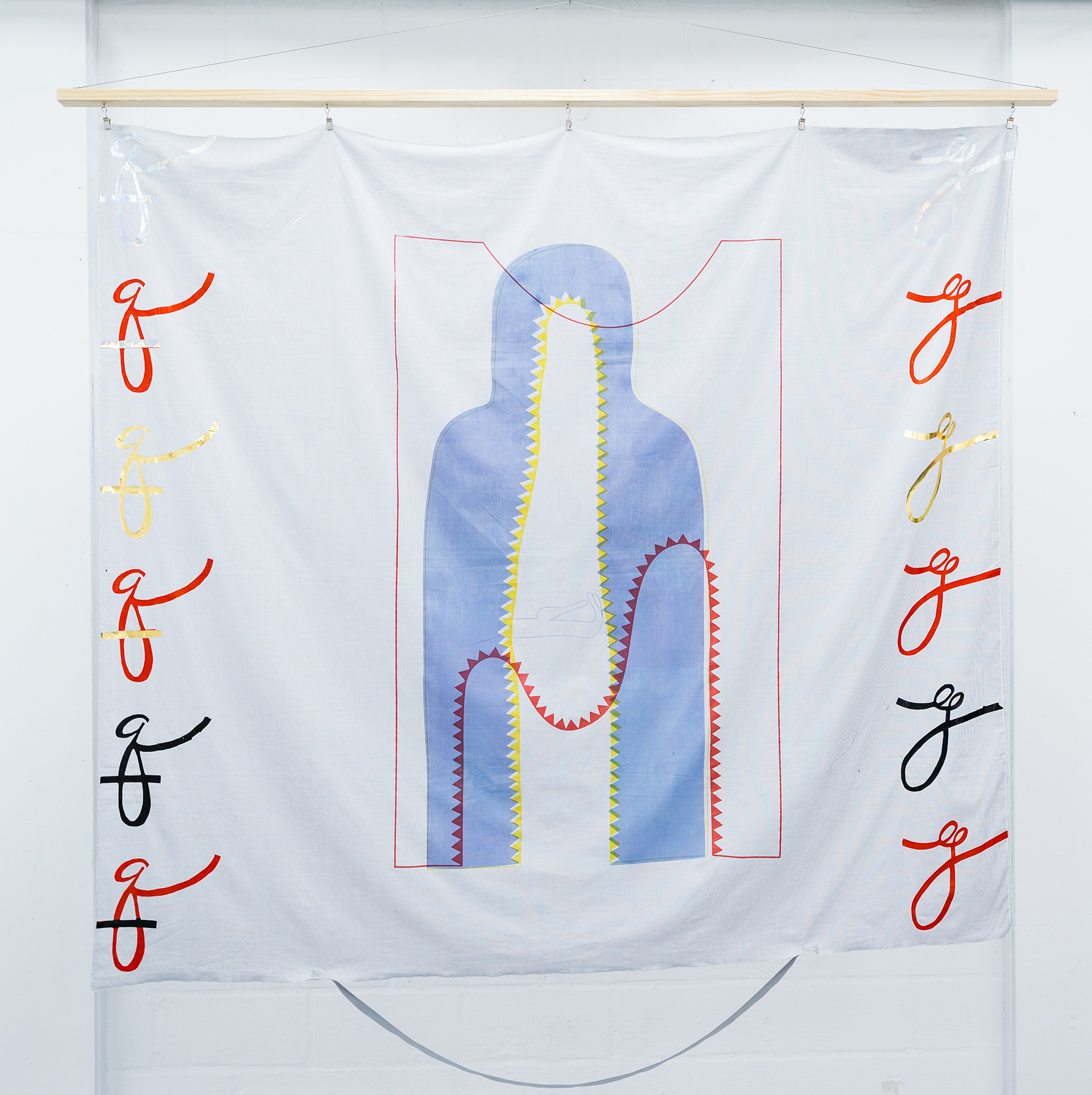
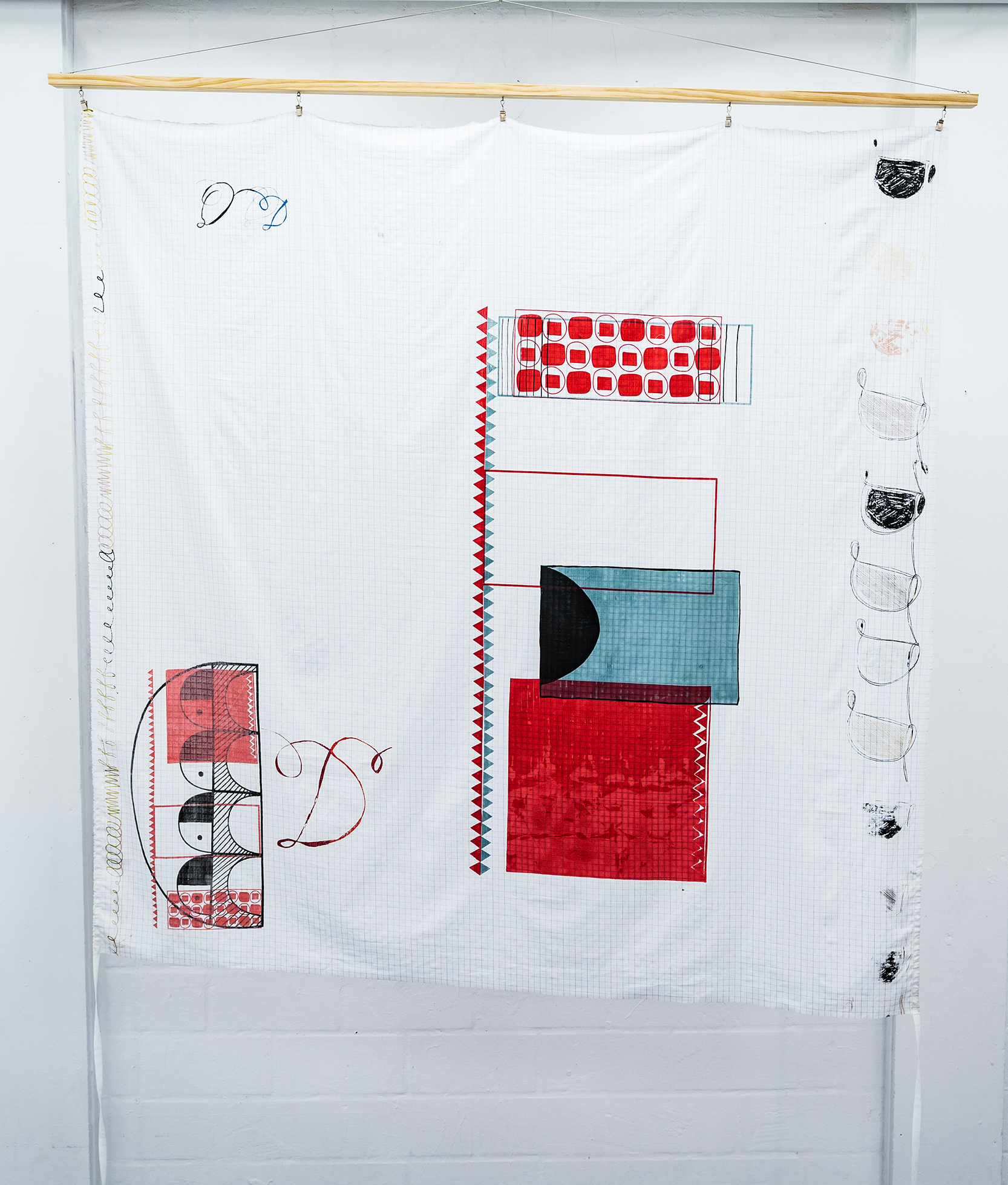
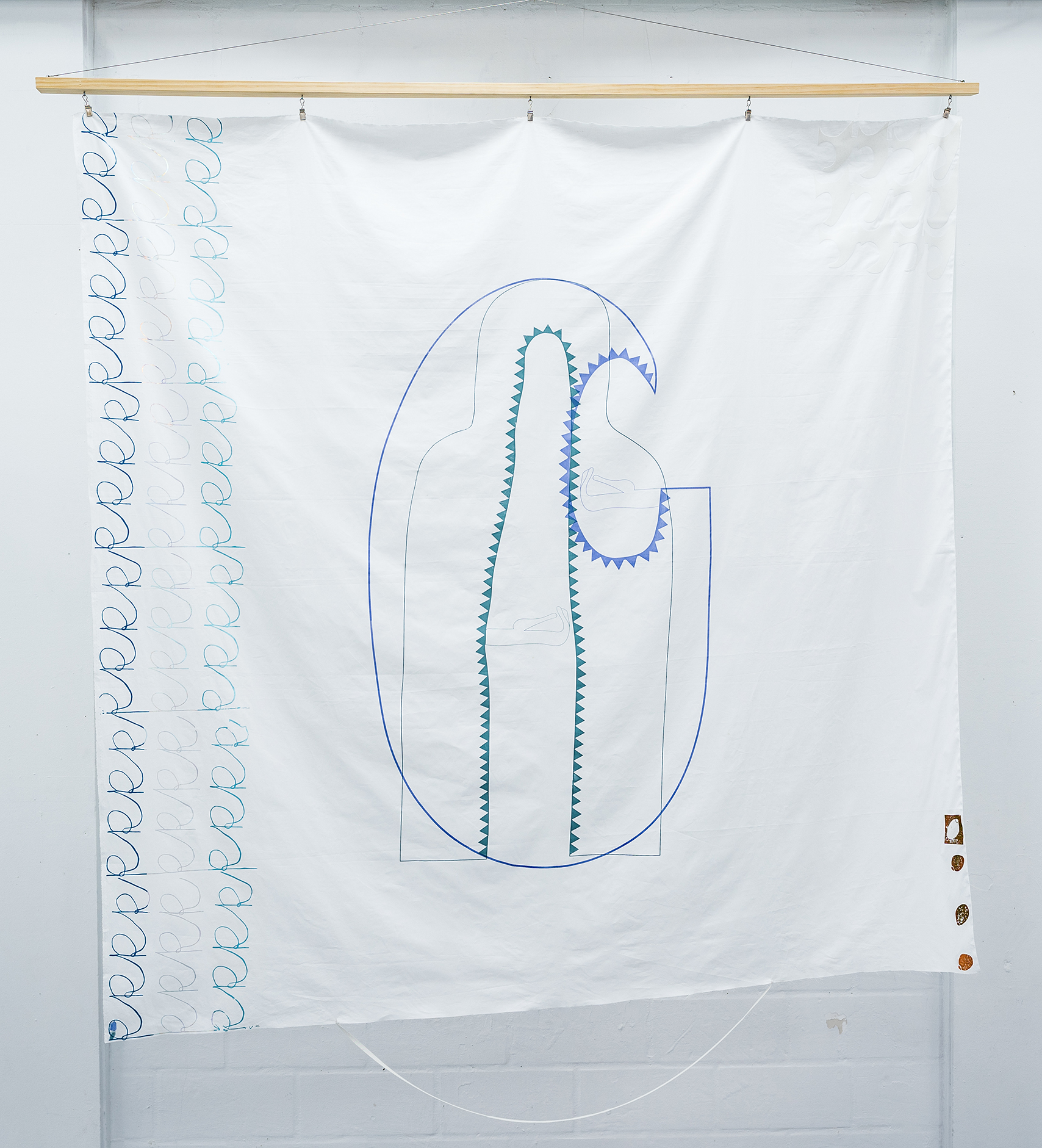

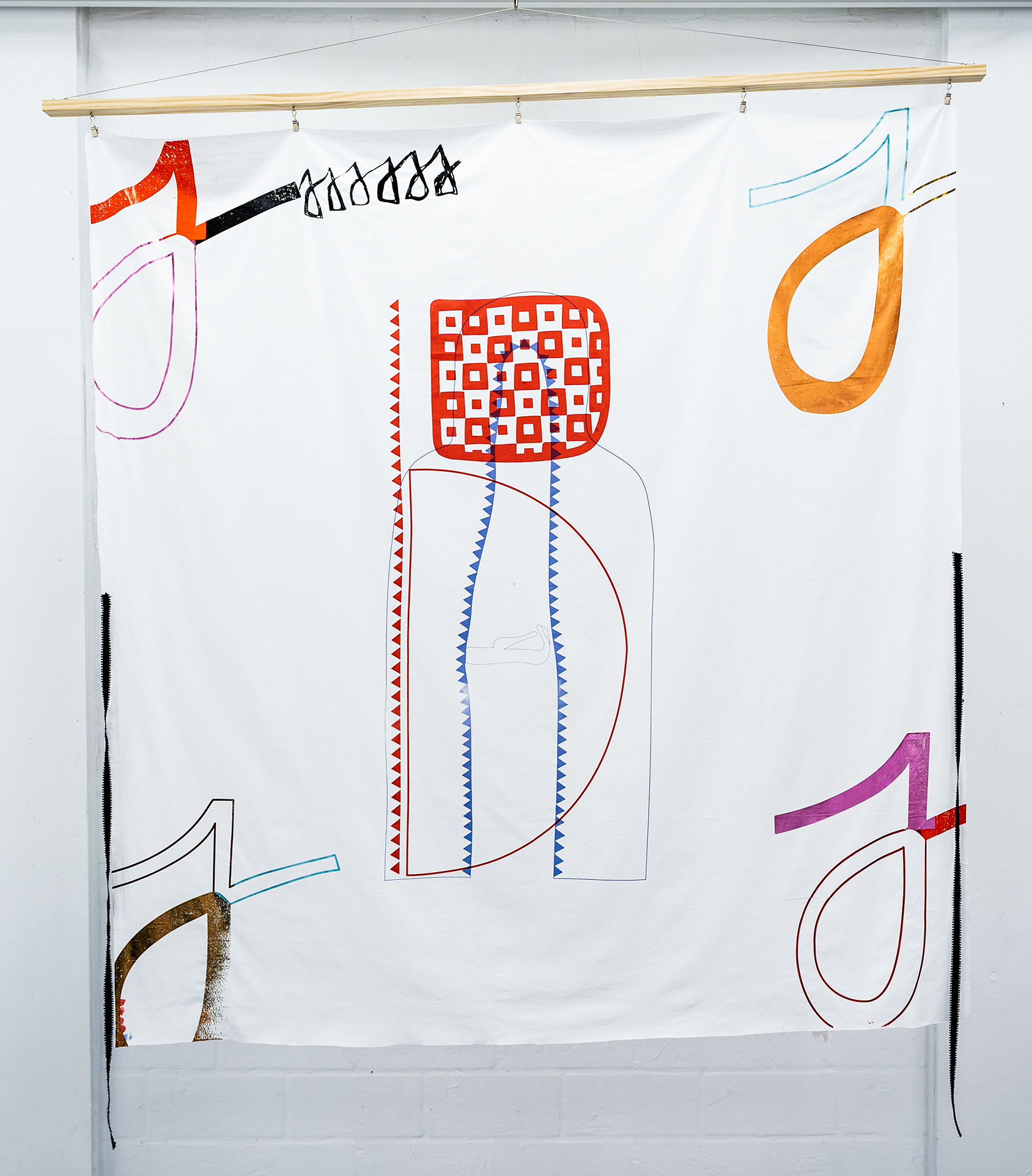
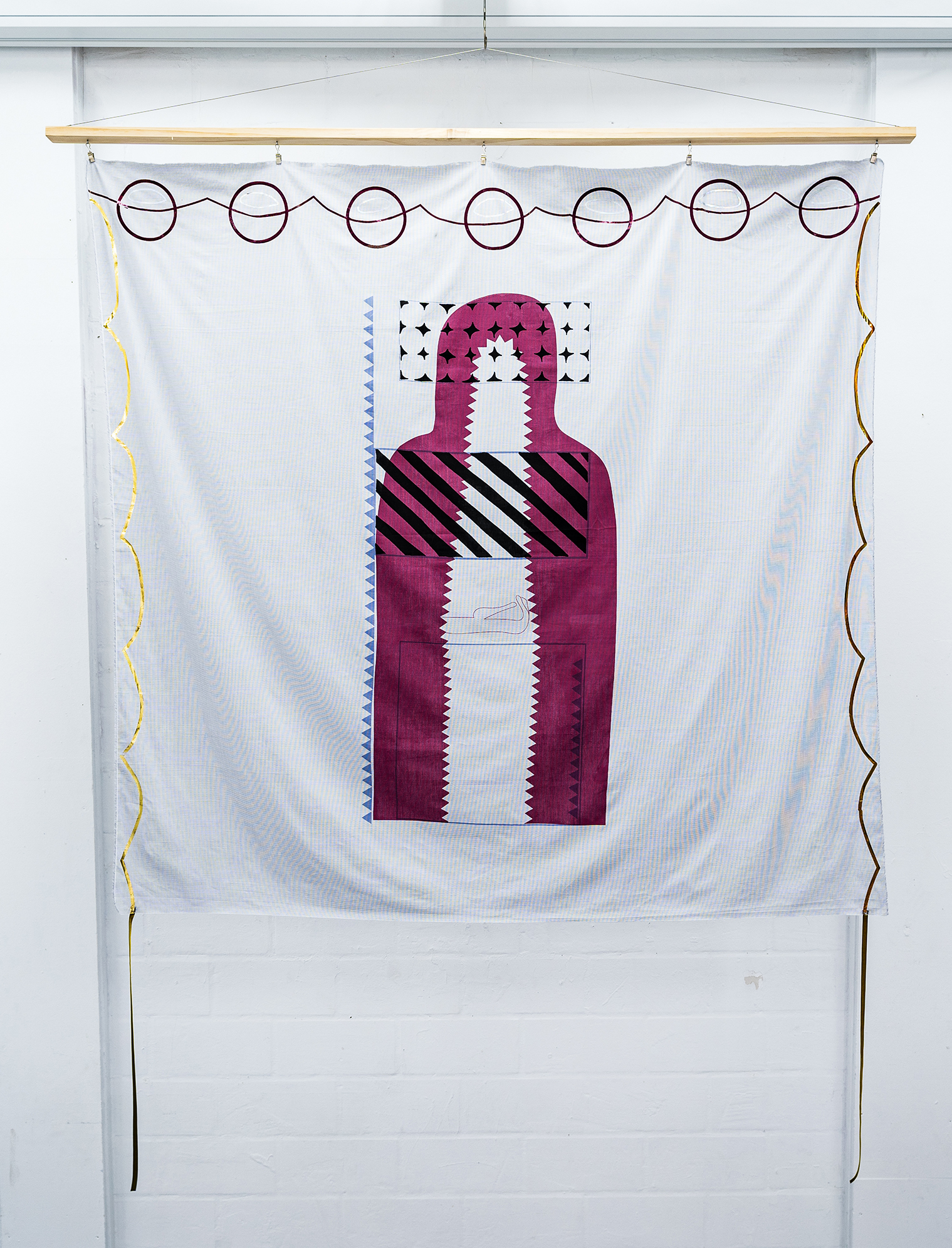
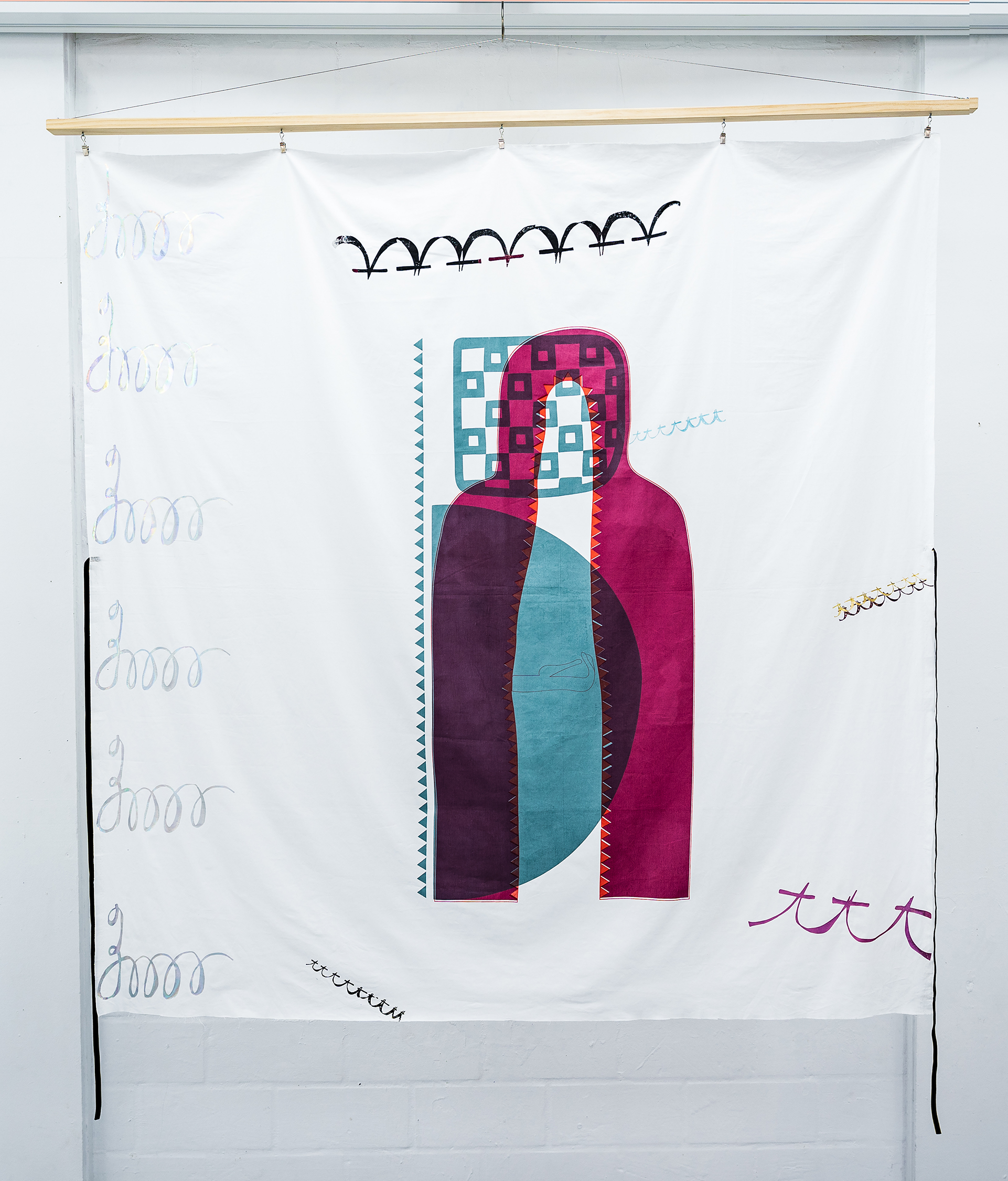
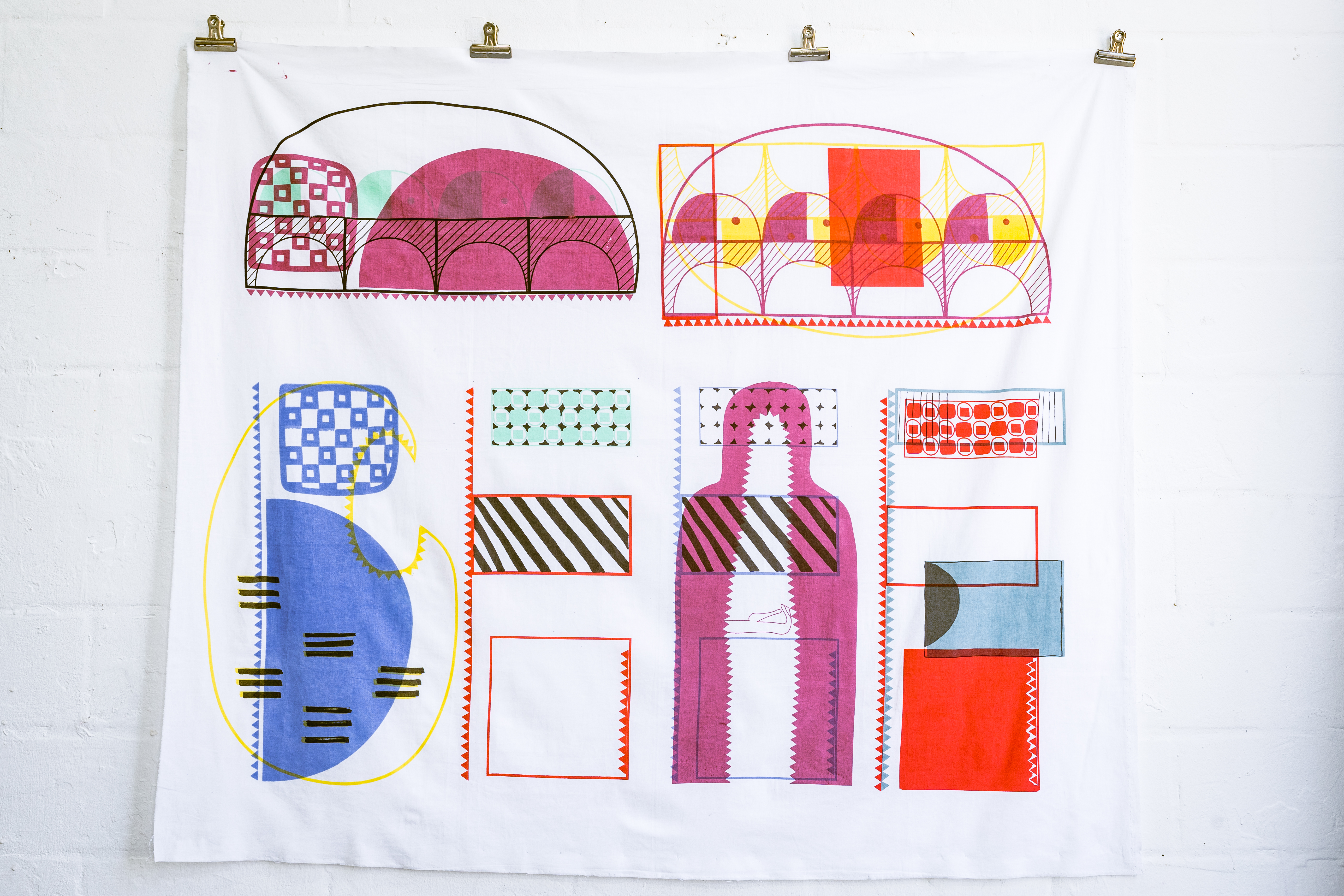
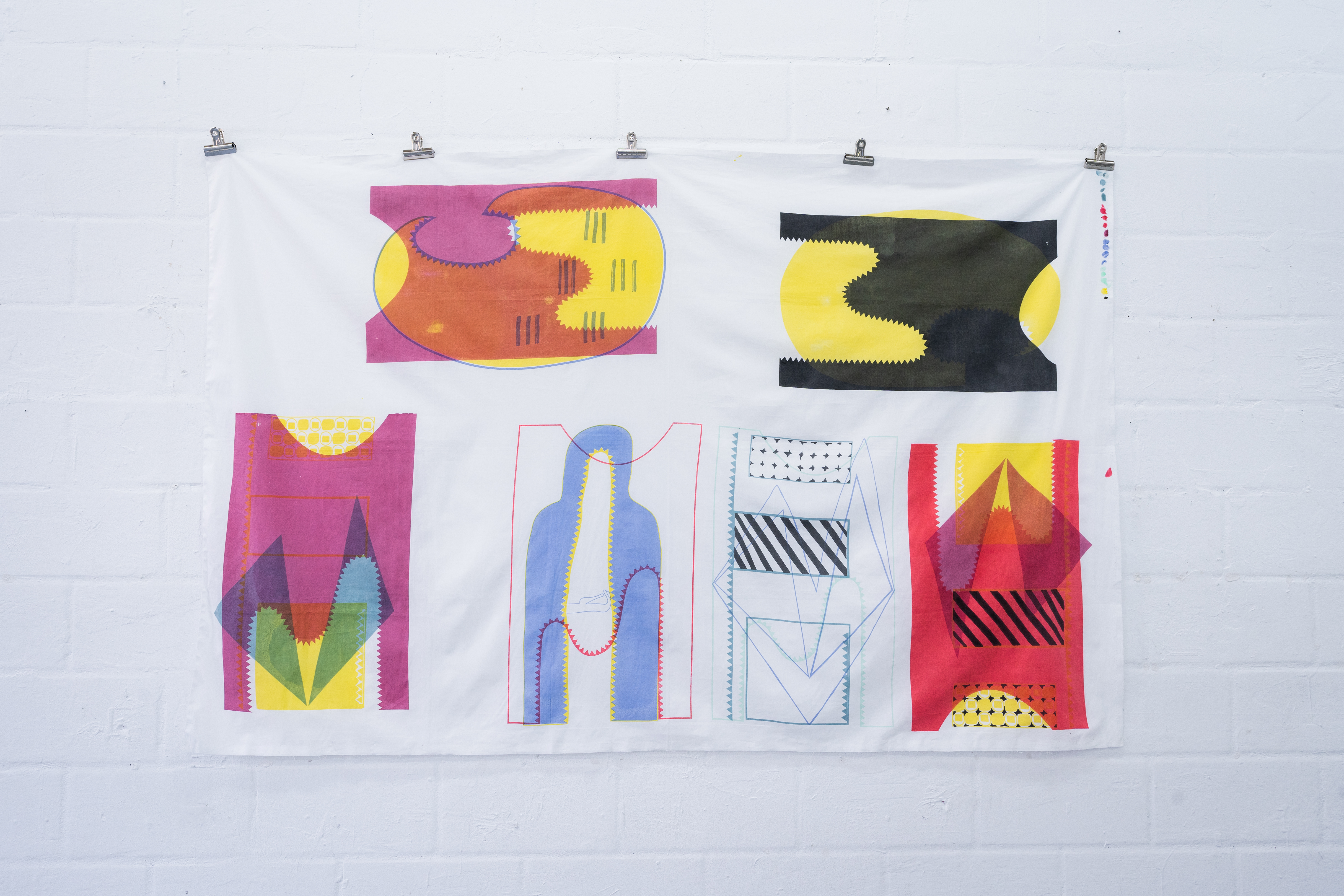
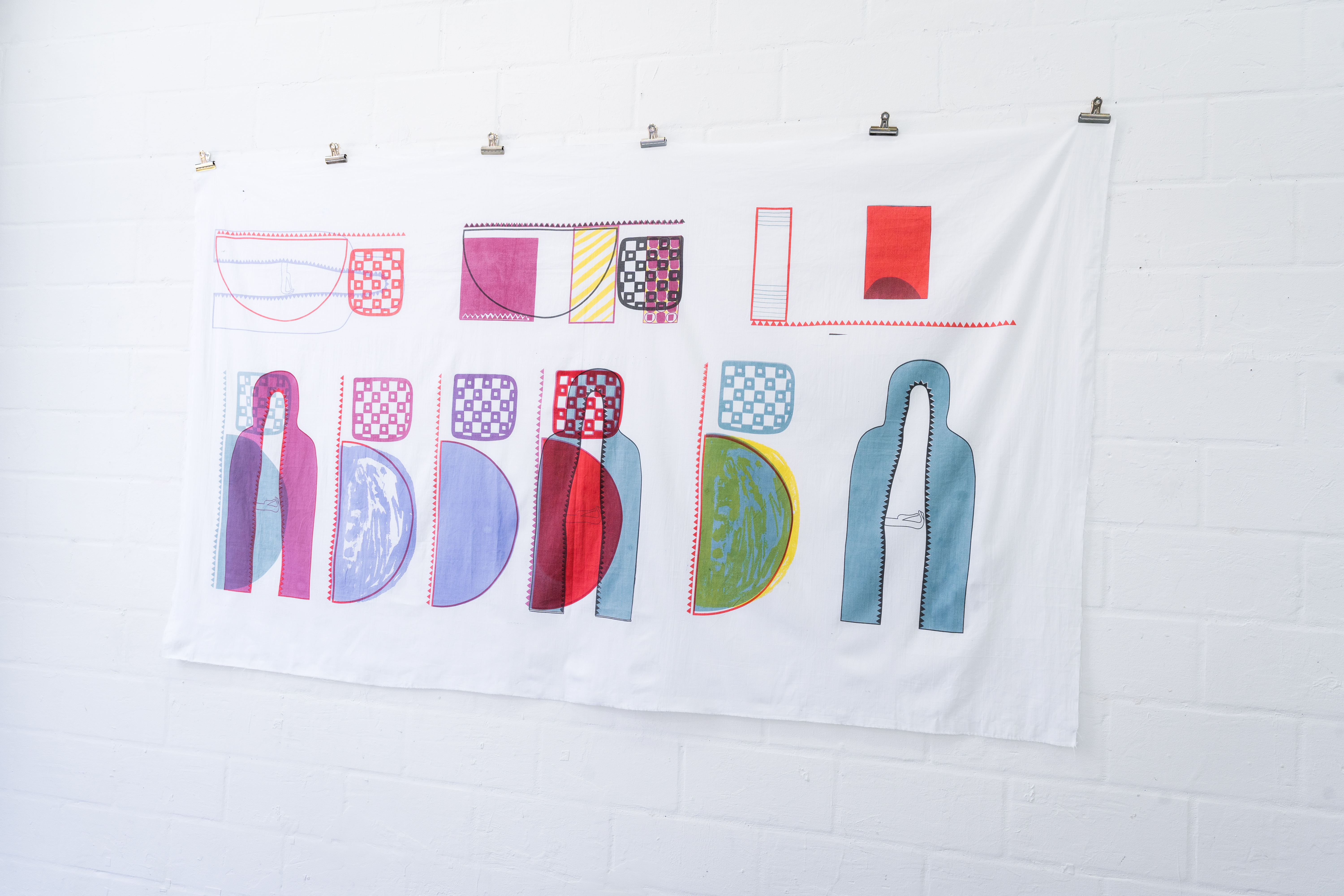
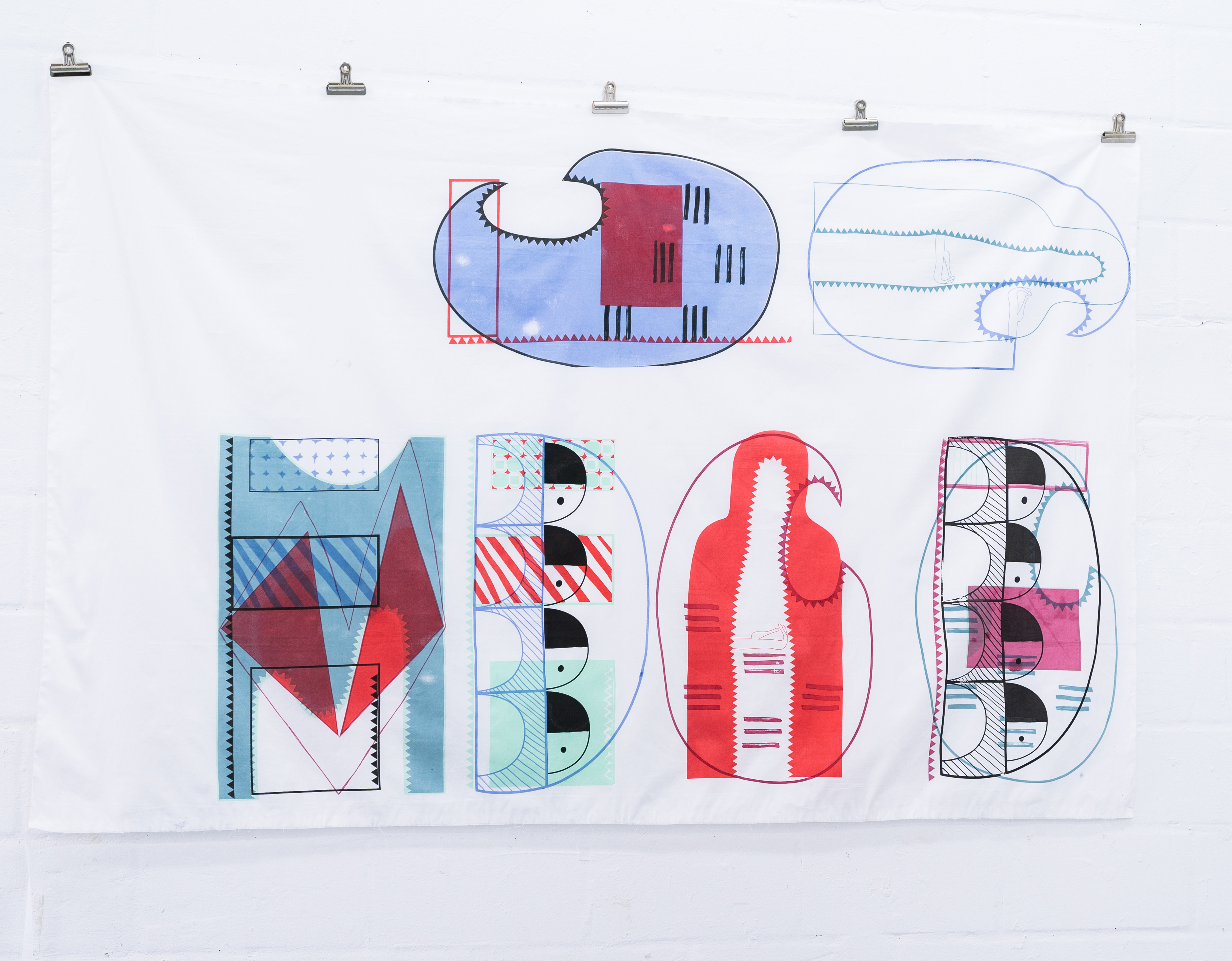
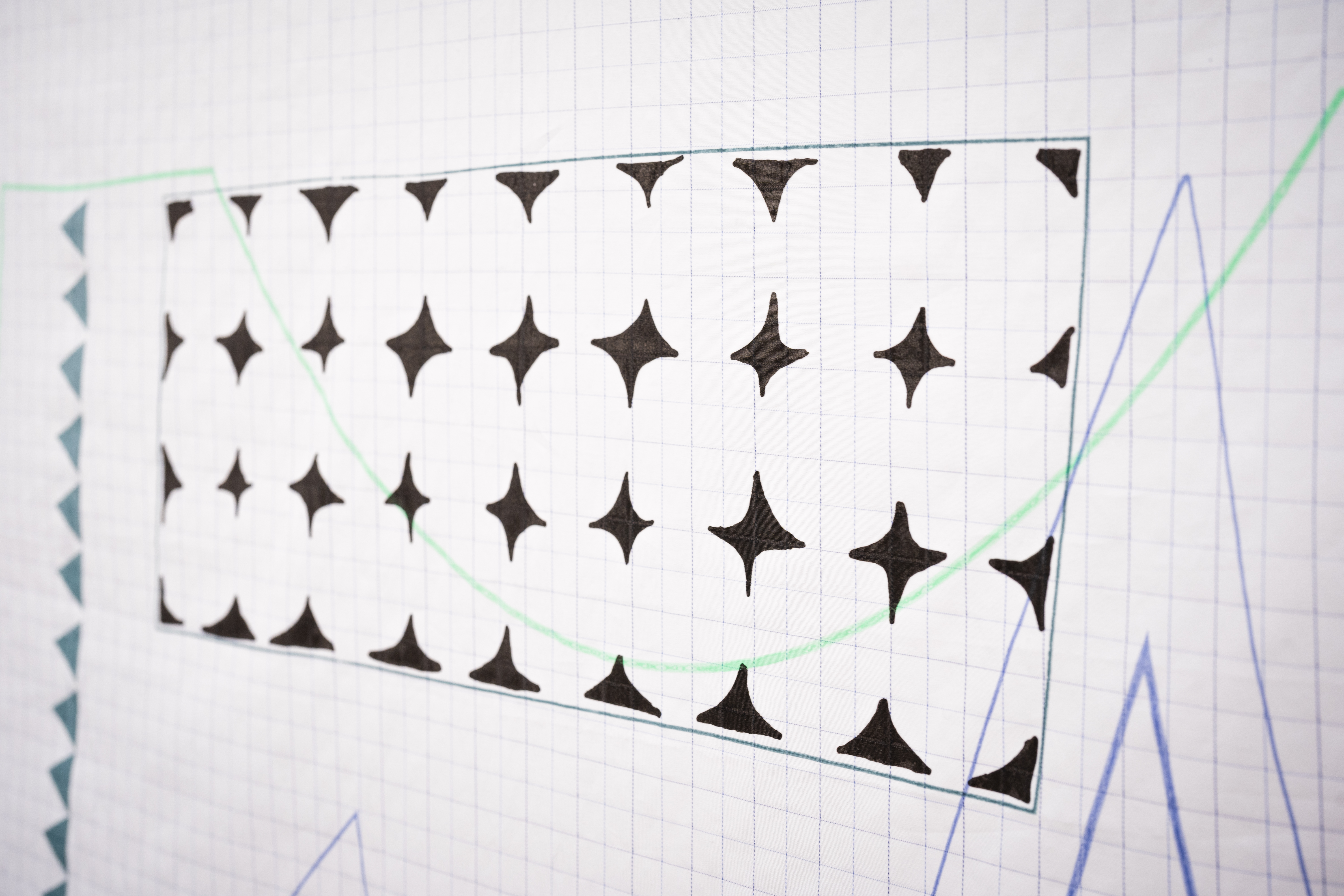

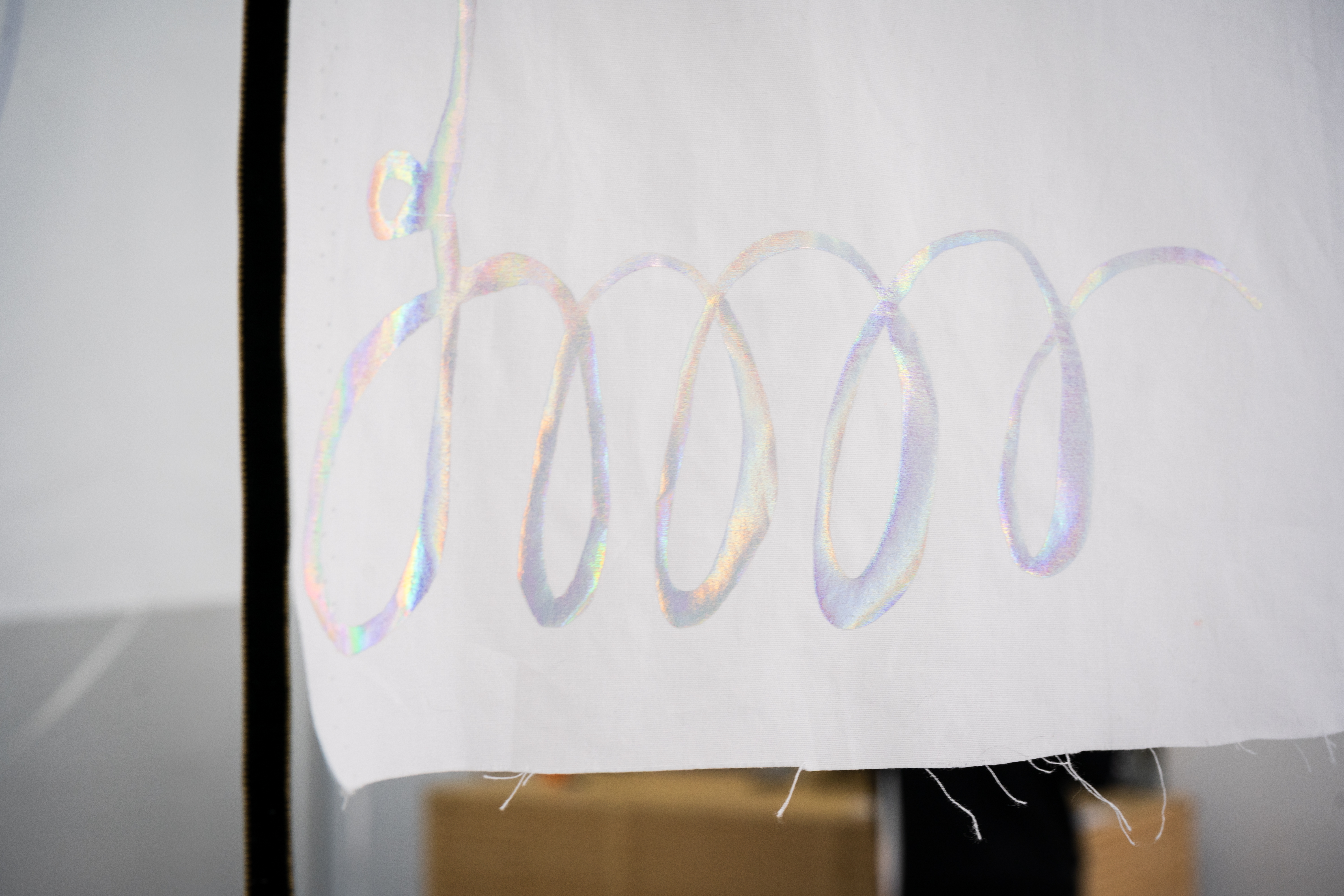
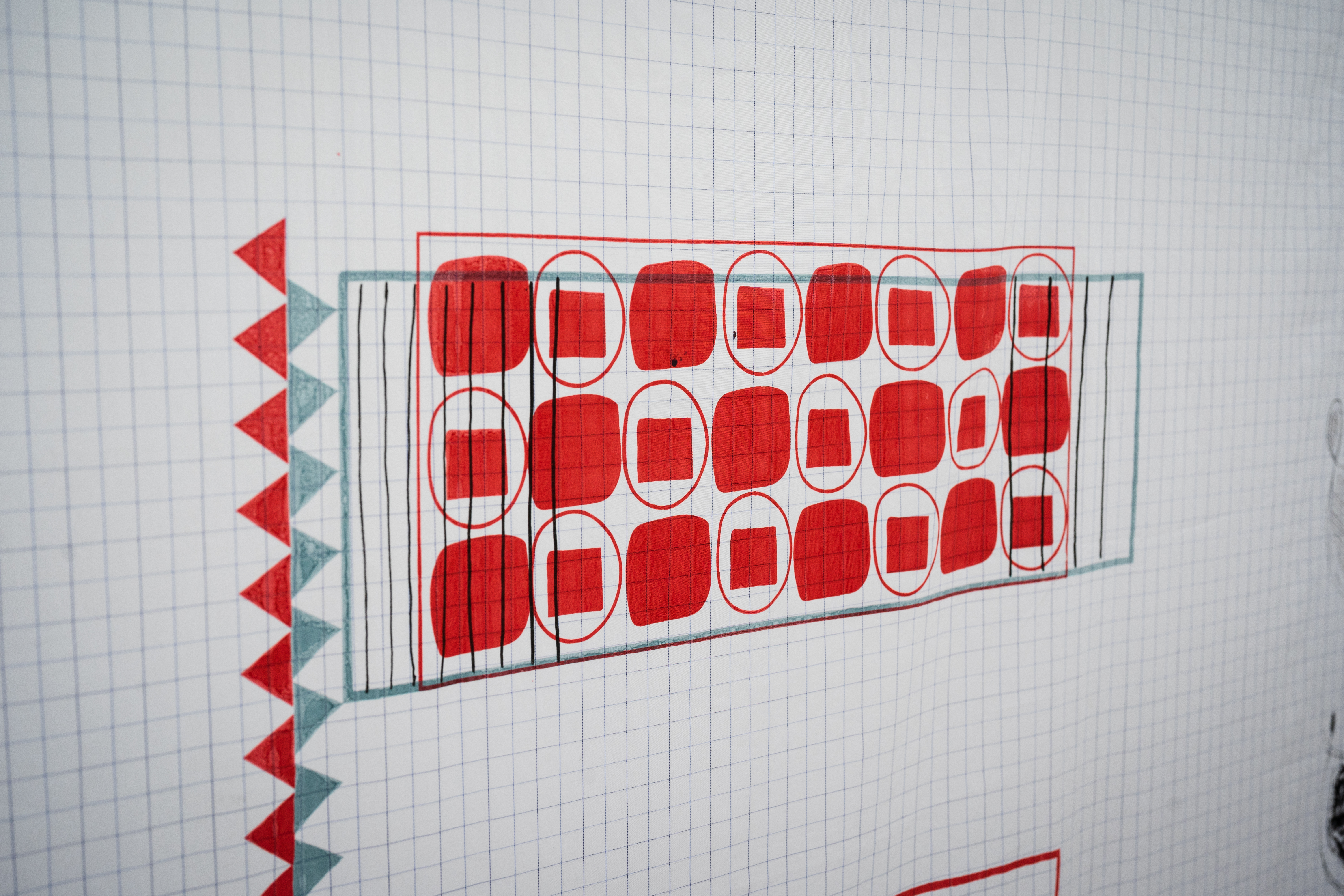
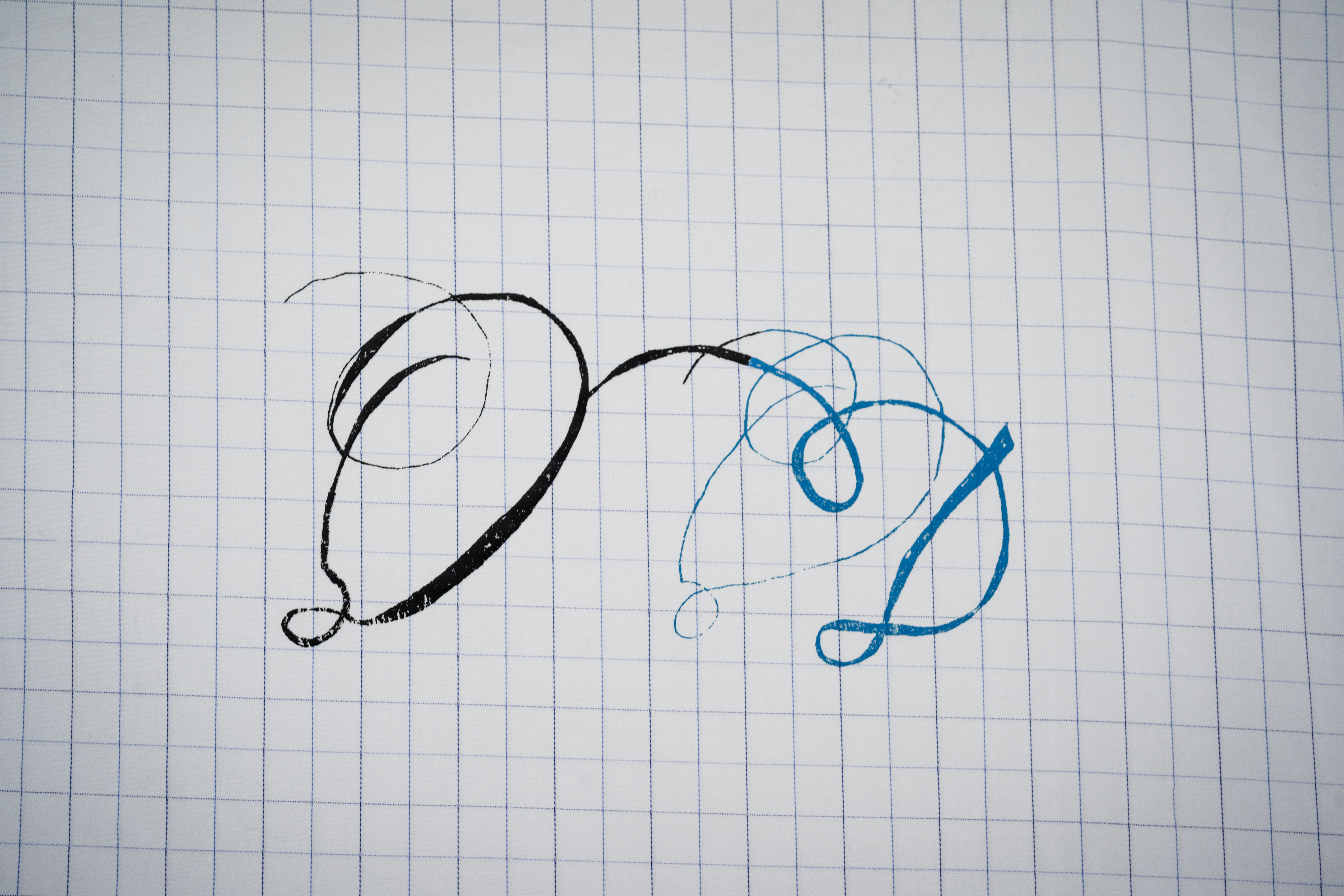
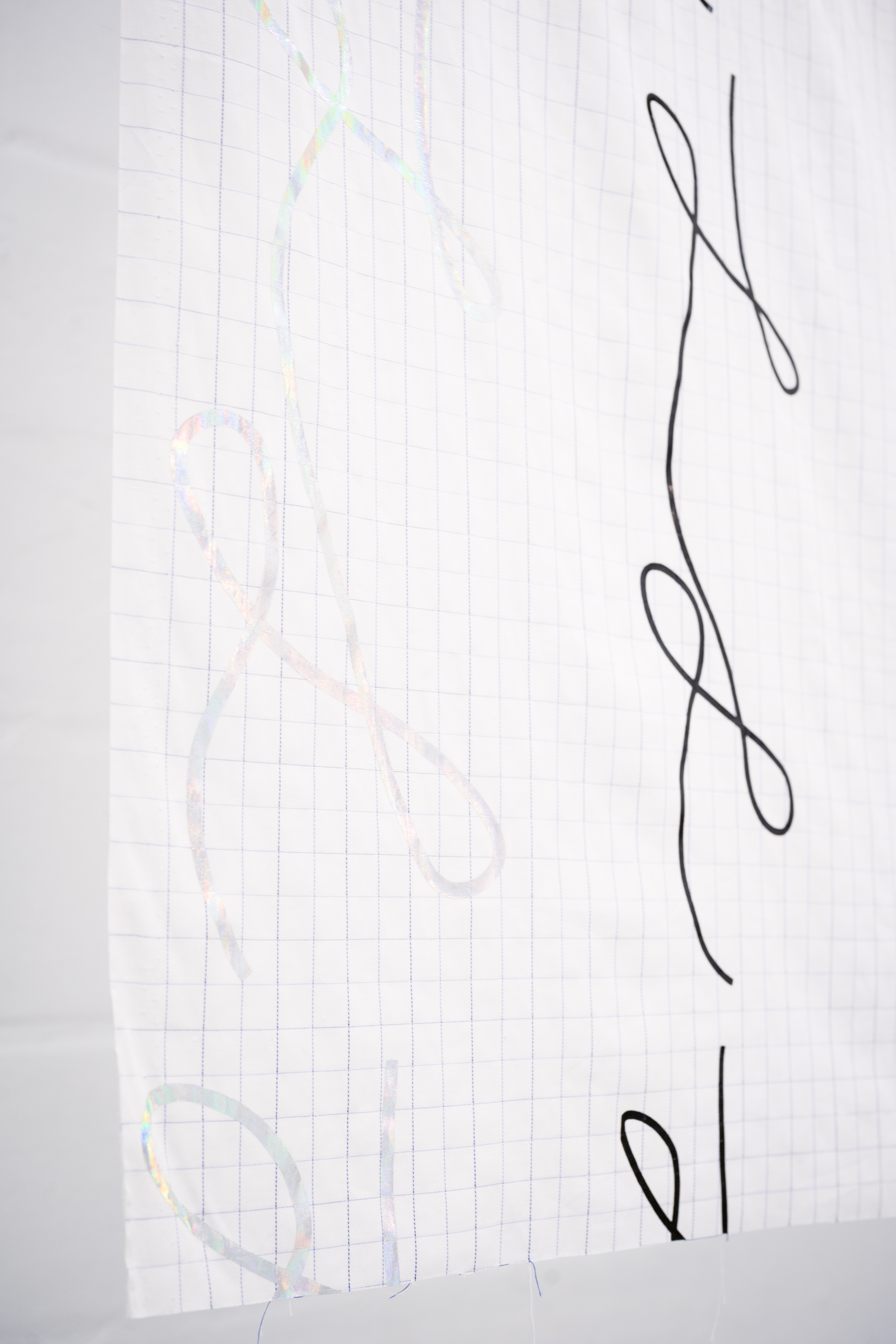
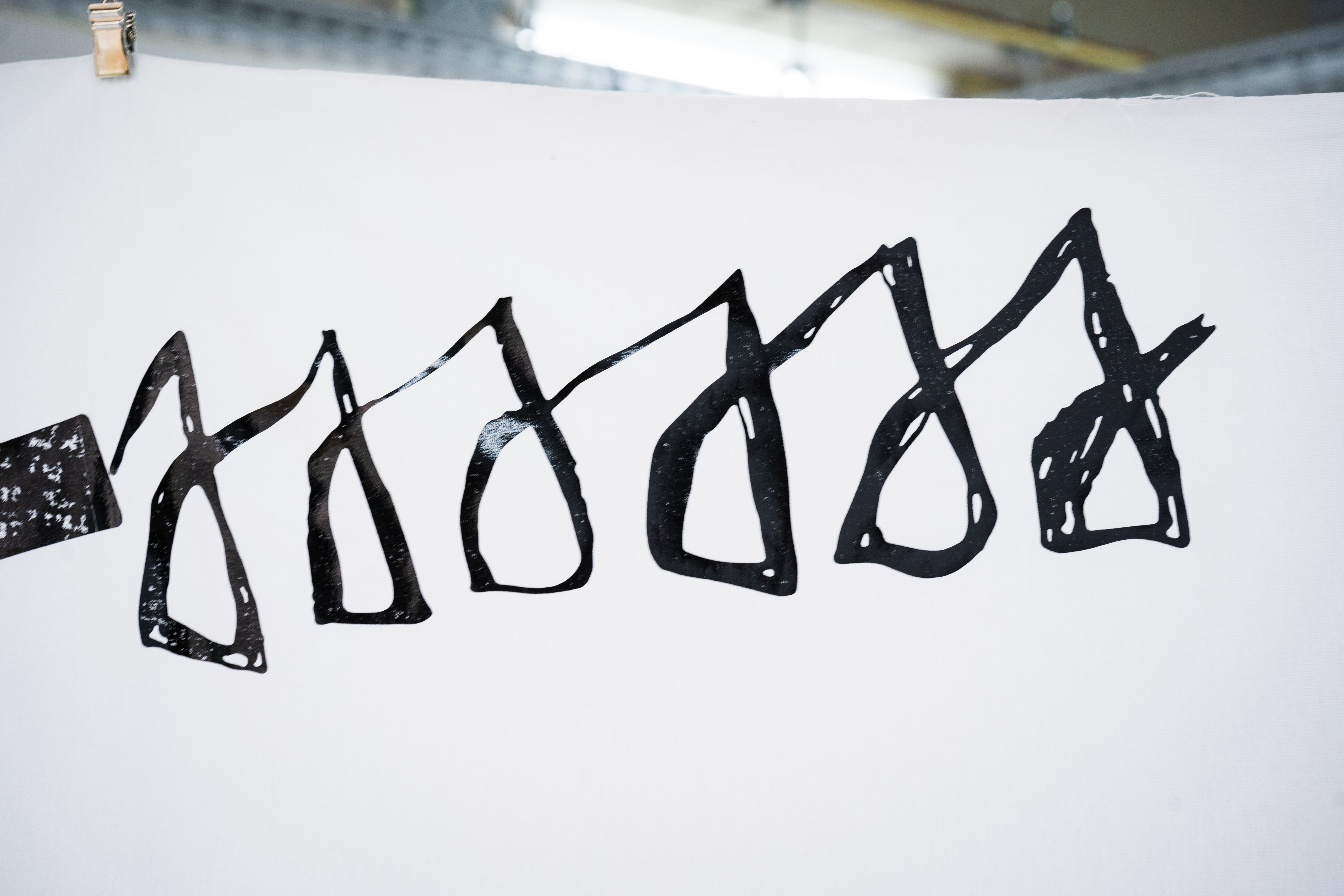
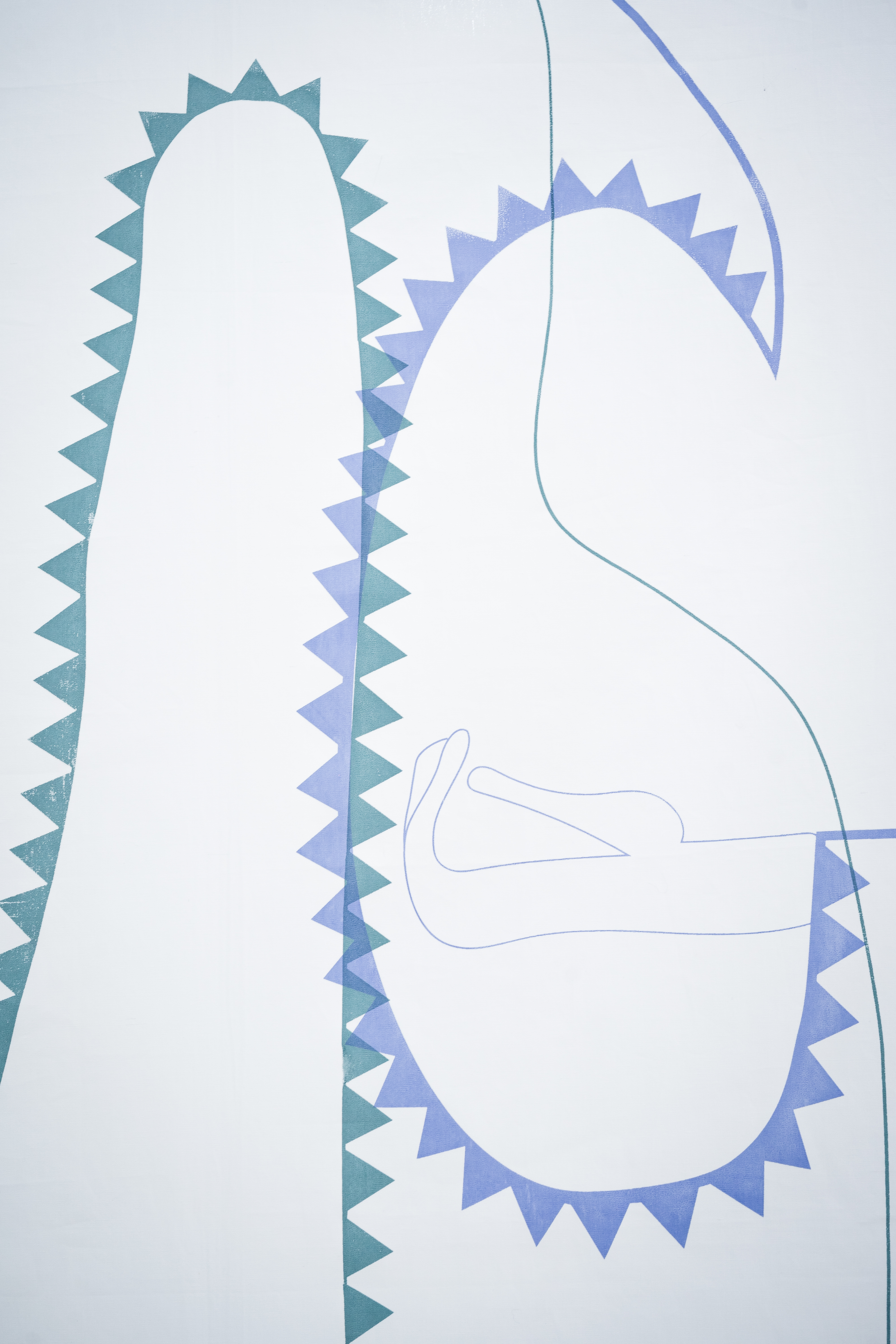
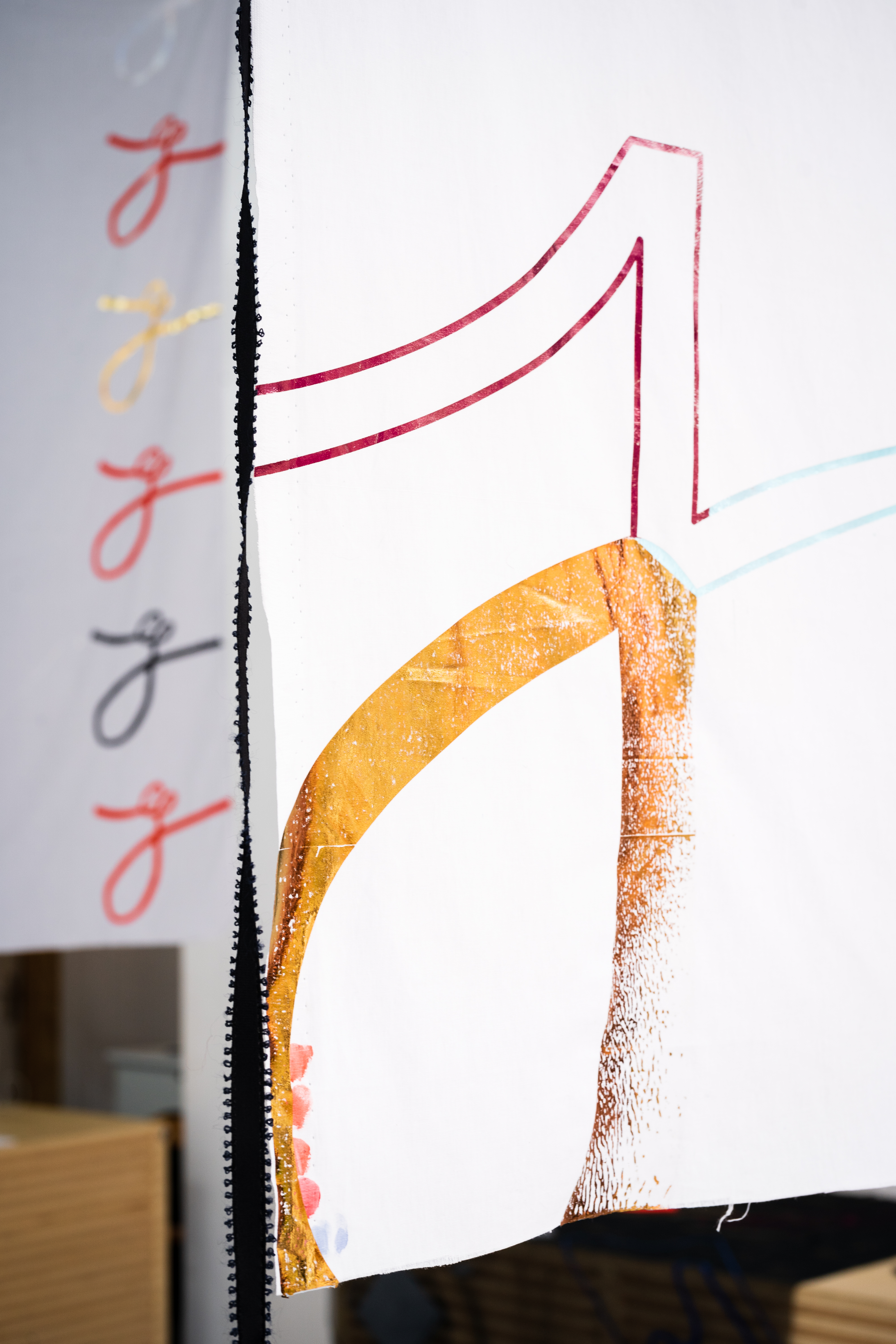
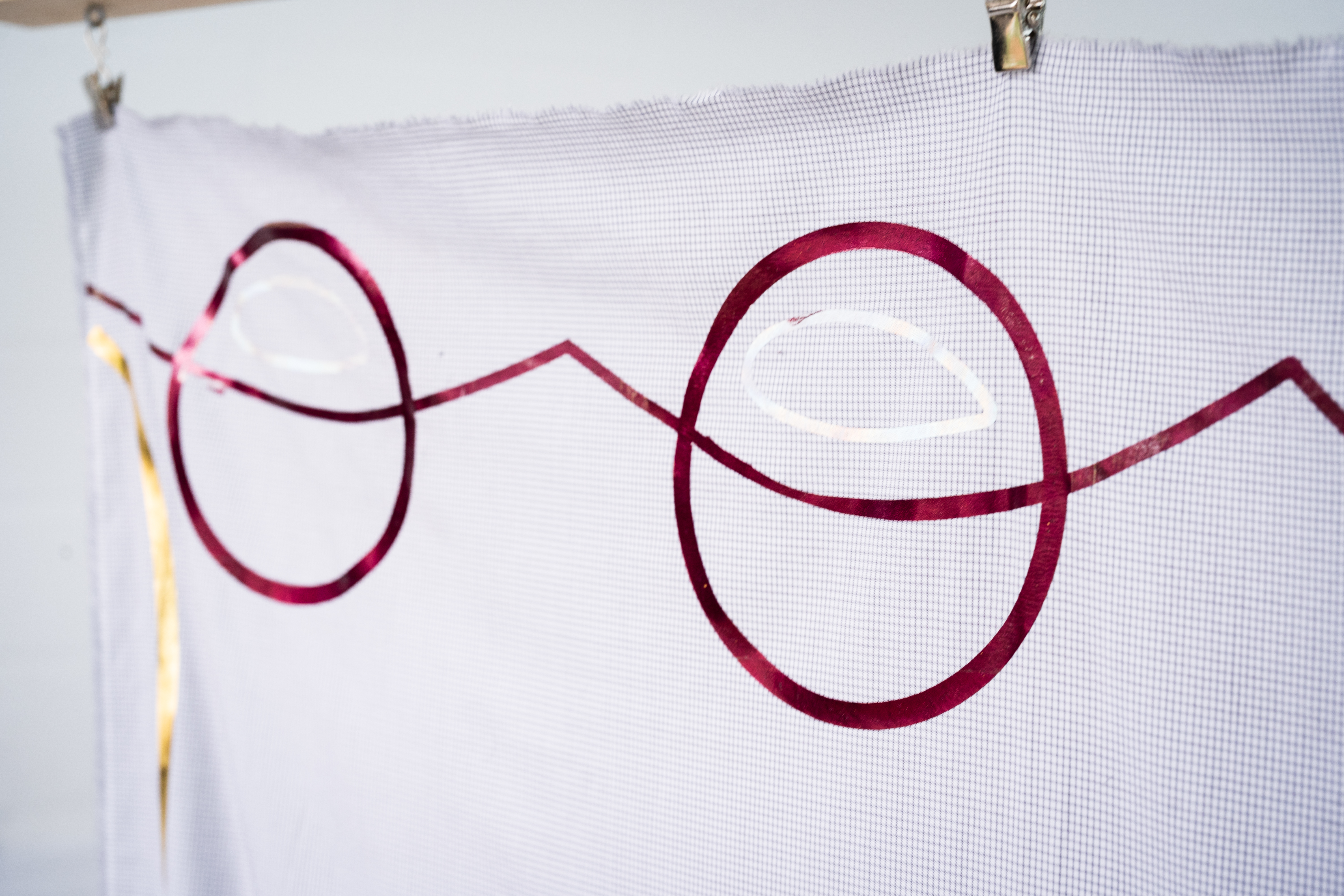
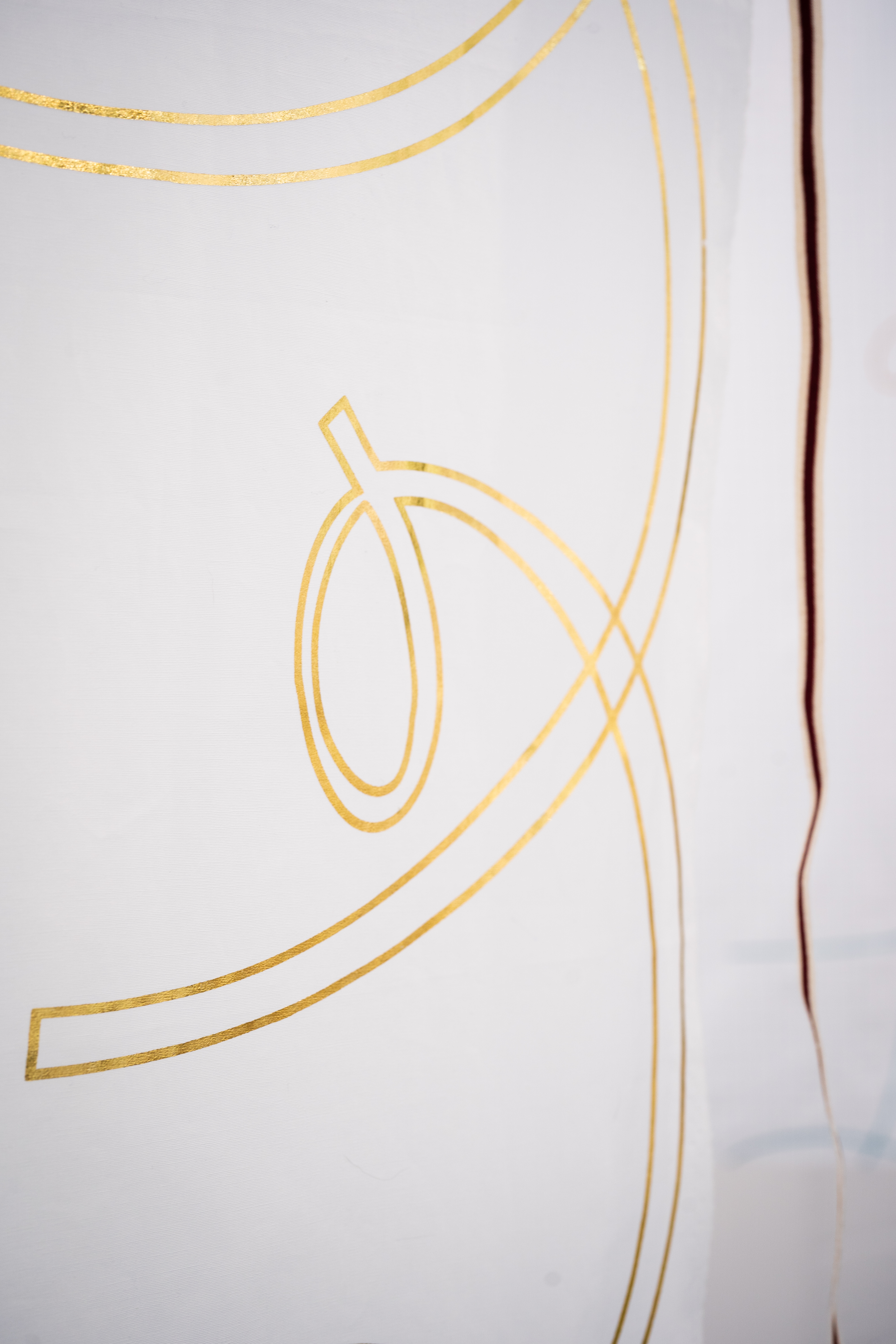
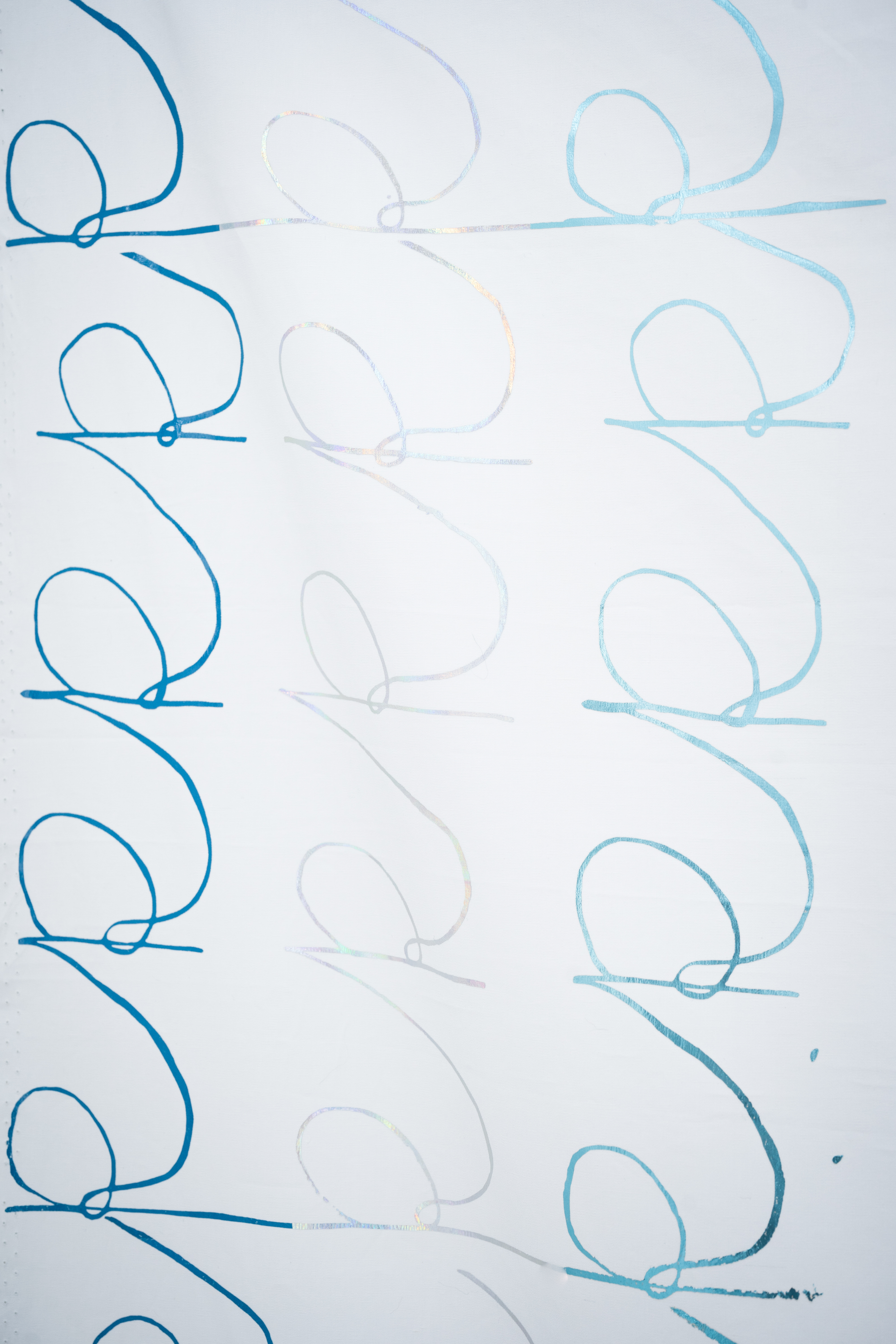
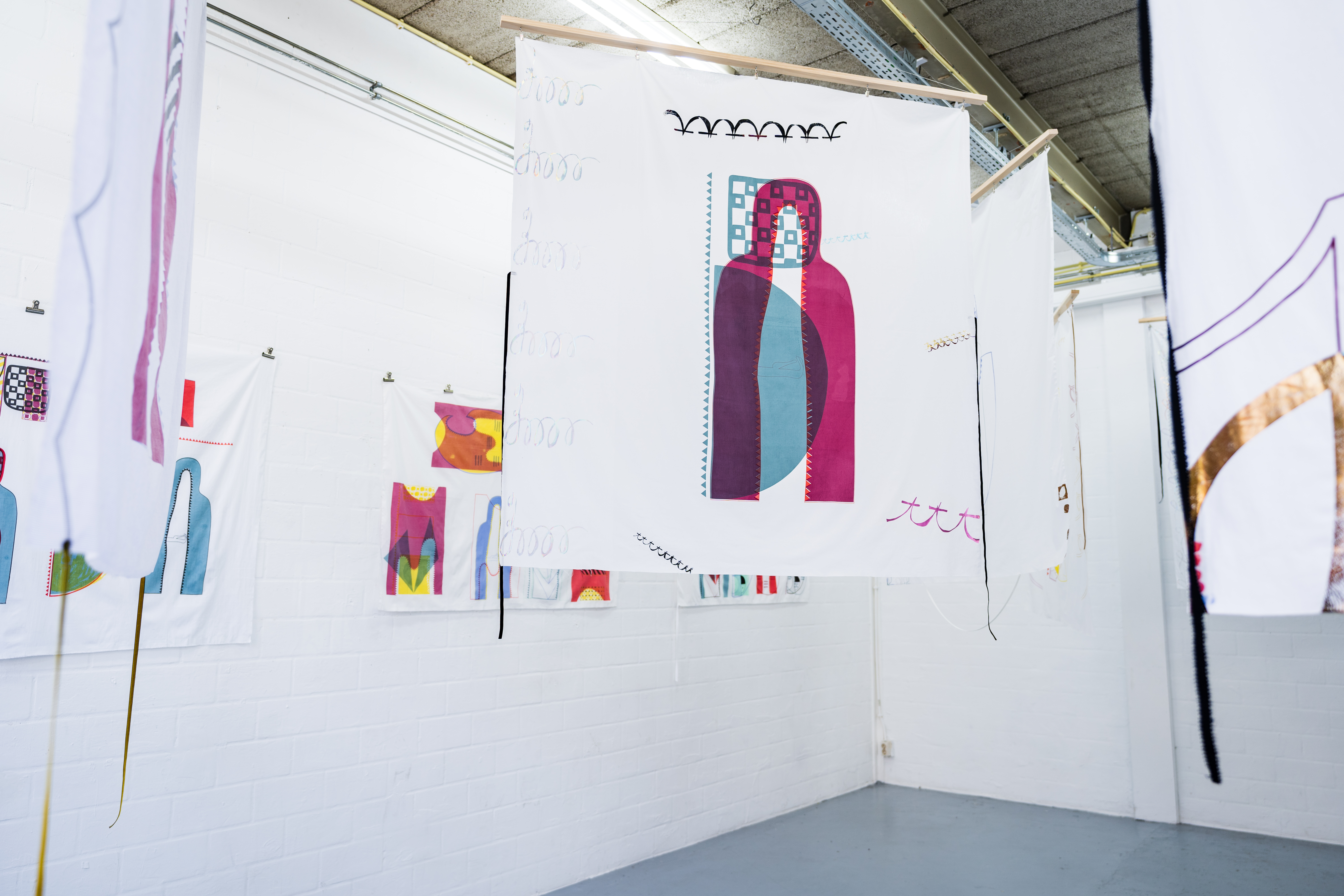
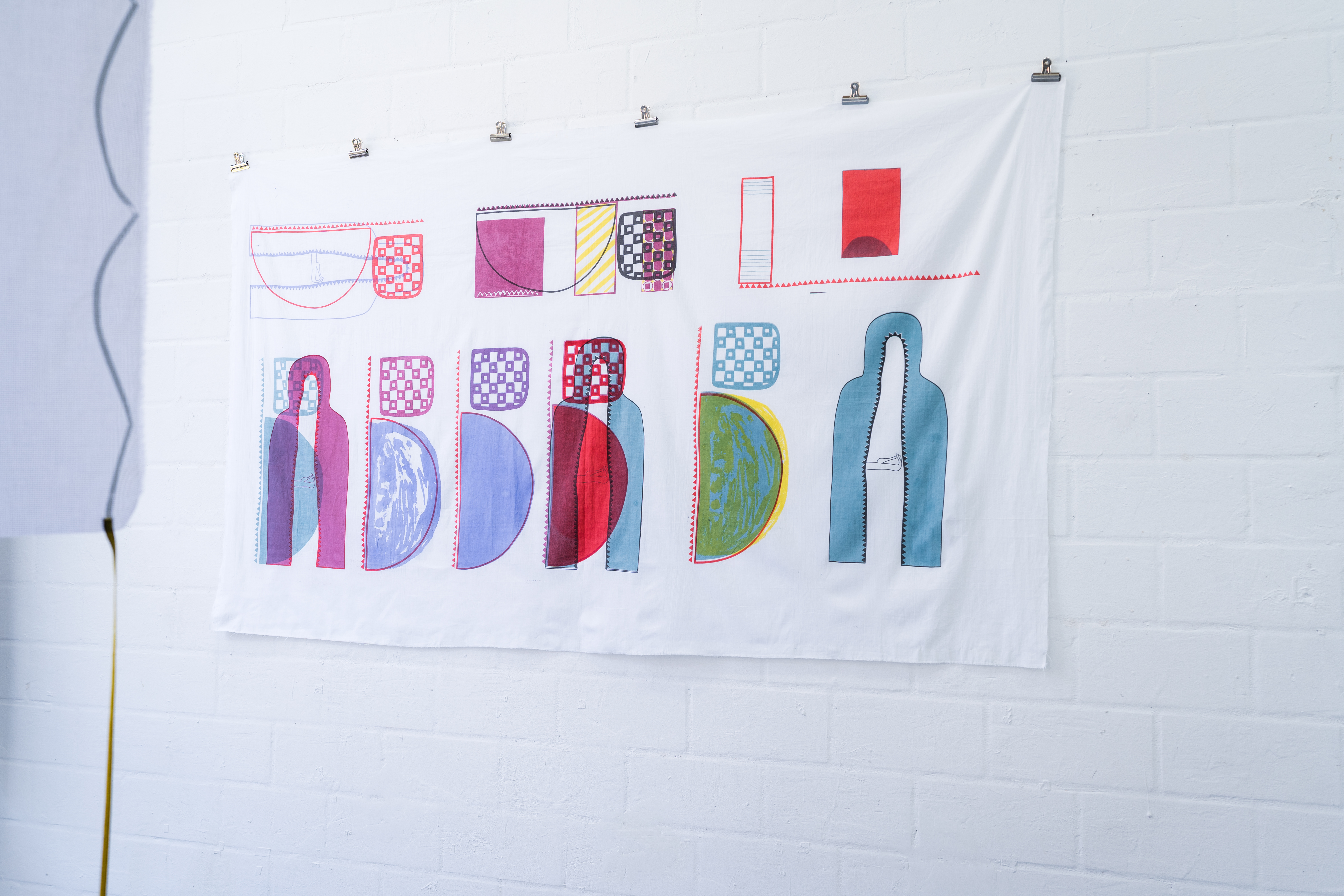
Signature Selfie Volume 1: A-G, M, V explores how the symbols, signs, and visual markings we wear influence our self-perception.
This work consists of medium- and large-scale hand-printed textiles inspired by Wiener Werkstätte's use of monograms as personal logos and the distinctiveness of handwriting and handwritten signatures. These prints navigate the space between abstraction and figuration, encouraging viewers to reflect on the prevalence and significance of personal branding in a world where social media increasingly expects us to promote and brand ourselves.
Members of the Wiener Werkstätte employed monograms as logos that they hoped embodied the philosophy and essence of their work and, ultimately, themselves. They identified with these monograms, much like how we seek to make our selfies represent us nowadays. However, unlike monograms, selfies are plentiful, each capturing a different moment and version of ourselves—no single digital visual representation can capture our complete essence.
A person's handwritten signature also represents the self, and considerable effort is often devoted to crafting the "perfect signature." Yet, handwriting is becoming less common, as younger generations increasingly struggle with reading or writing in cursive. This form of personal representation risks being lost forever.
Each piece in this collection features silk-screen-printed geometric and organic shapes that form monogram letters. On the fabric's selvage, heat-pressed markings resemble handwriting exercises, suggesting continuity beyond the picture plane, similar to the ongoing patterns of printed fabric or the pages of a notebook filled with scribbles and doodles.
I designed a font using the first half of the alphabet and my initials to create these works. This font combines geometric shapes with figurative forms resembling the human body. By layering each letter over another to form each monogram, new shapes emerge from the interplay of negative space and transparent color overlays. This process mimics linear writing, echoing traditional handwriting and calligraphy techniques.
Additional elements referencing garment making, such as straps, hems, and finishes, blur the lines between whether these textiles are intended to be draped on a body or displayed on the wall.
The medium textiles in this body of work demonstrate the creation process of these monograms, resembling the repetition found in writing exercises. This reflects our constant search for ways to present ourselves and showcase our diverse identities.
